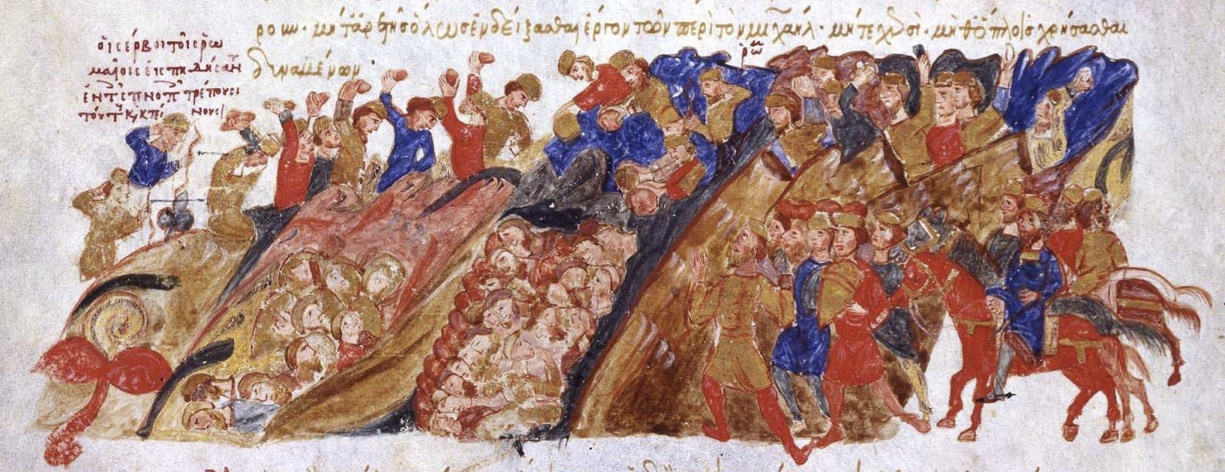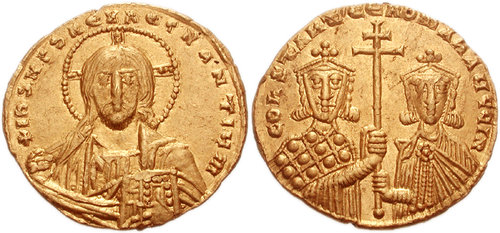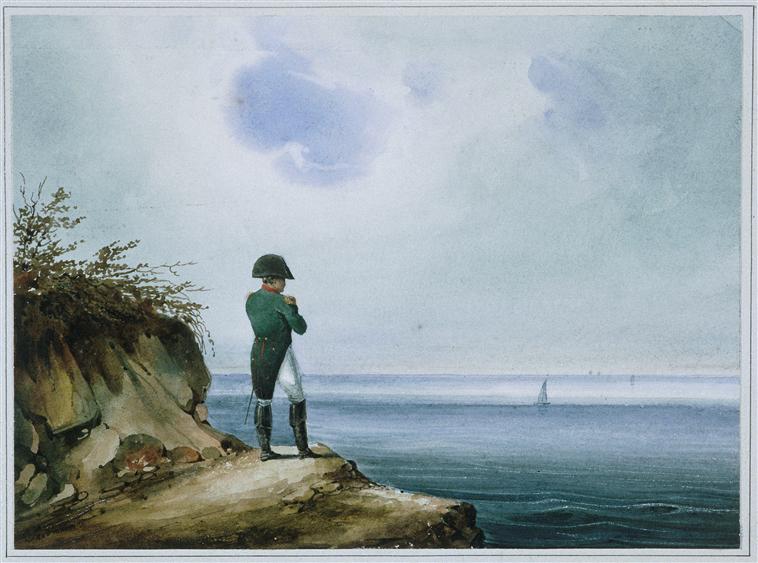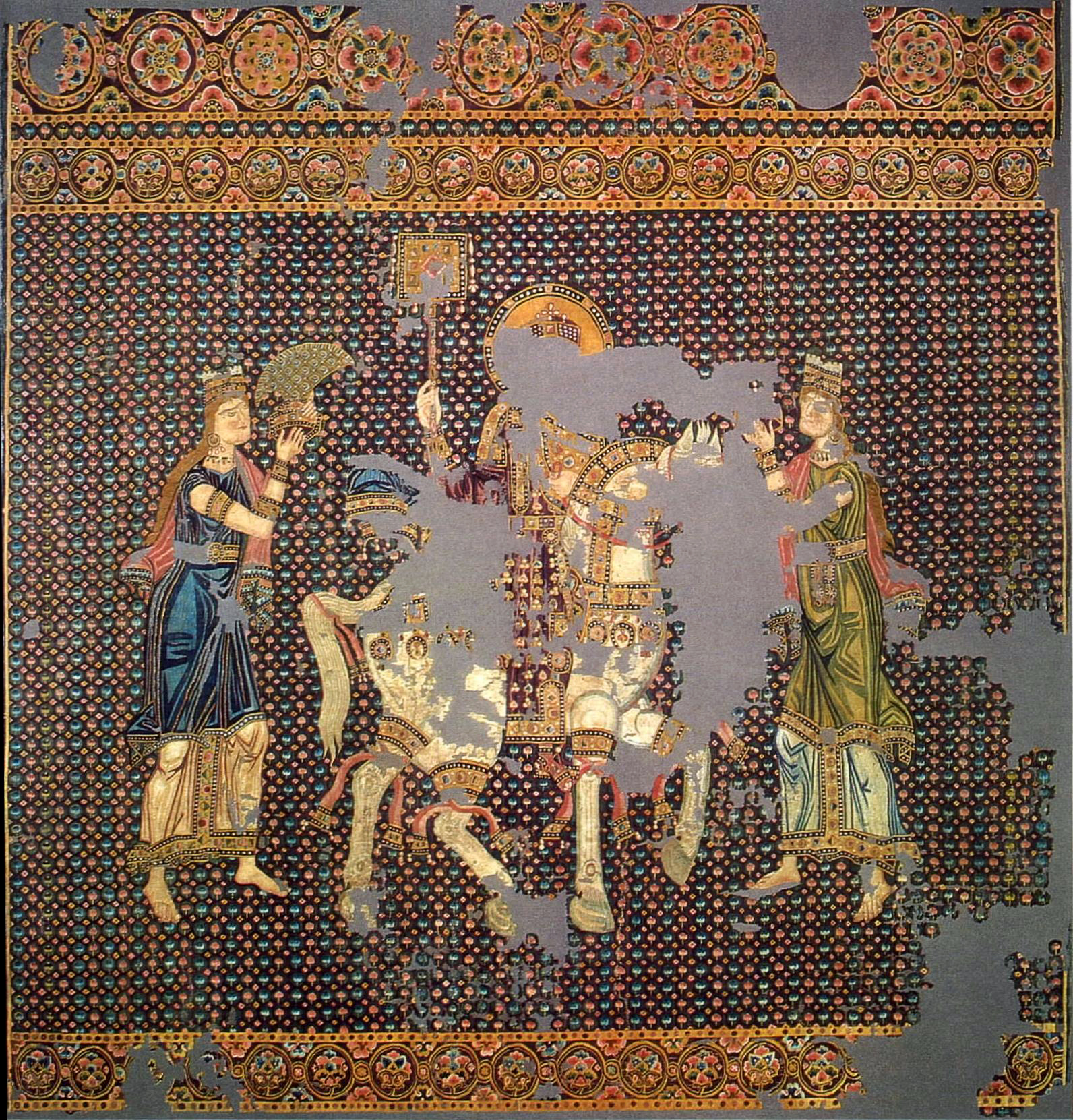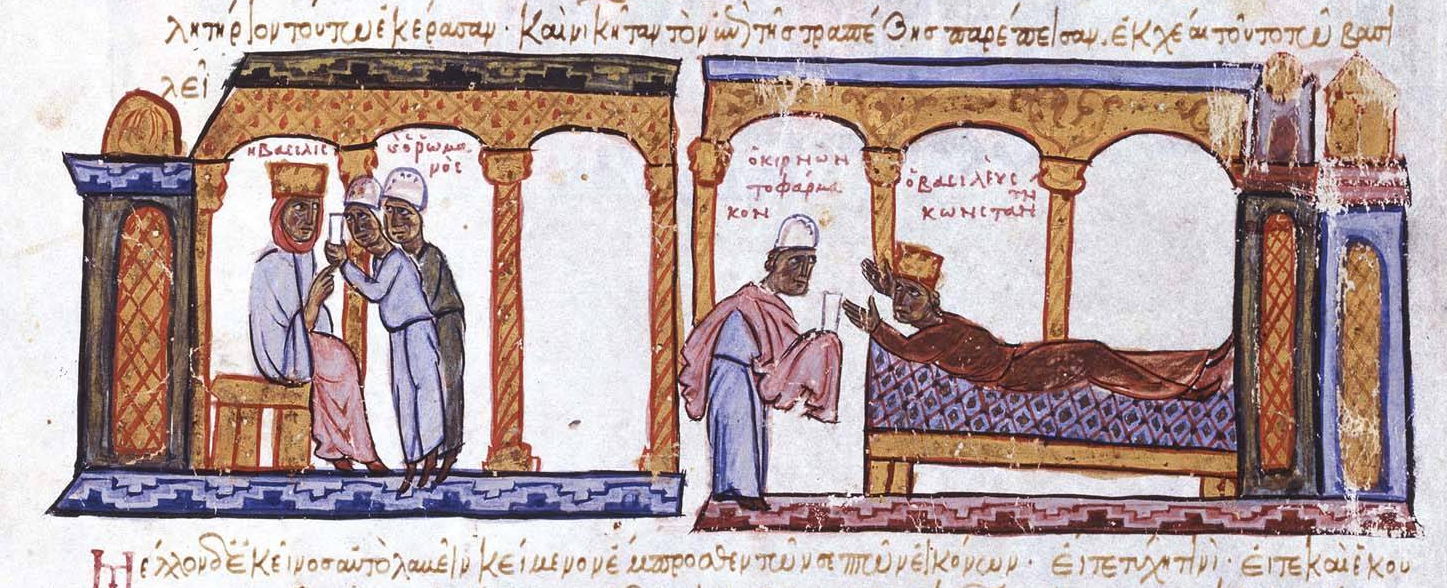|
Polyeuctus, Patriarch Of Constantinople
Polyeuctus ( gr, Πολύευκτος, died 5 February 970) was Ecumenical Patriarch of Constantinople (956–970). His orthodox feast is on February 5. History Polyeuctus was raised from being a simple monk to the Patriarchate in 956, as successor to the imperial prince Theophylact Lekapenos, and remained on the patriarchal throne in Constantinople until his death on 16 January 970. For his great mind, zeal for the Faith and power of oratory, he was called a "second Chrysostom". Although he was given his position by Constantine VII, he did not show much loyalty to him. He began by questioning the legitimacy of Constantine's parents' marriage, and then went as far as to restore the good name of Patriarch Euthymius who had so vigorously opposed that union. The Russian Princess Saint Olga came to Constantinople in the time of Patriarch Polyeuctus during the reign of Byzantine Emperor Constantine Porphyrogenitus, and was baptised there in 957. The Patriarch baptised her, and the ... [...More Info...] [...Related Items...] OR: [Wikipedia] [Google] [Baidu] |
Madrid Skylitzes
The ''Madrid Skylitzes'' is a richly illustrated illuminated manuscript of the ''Synopsis of Histories'' ( el, Σύνοψις Ἱστοριῶν, ), by John Skylitzes, which covers the reigns of the Byzantine emperors from the death of Nicephorus I in 811 to the deposition of Michael VI Bringas, Michael VI in 1057. The manuscript was produced in Sicily in the 12th century, and is now at the Biblioteca Nacional de España in Madrid, with the shelfmark MS Graecus Vitr. 26–2. Other names for it are and . Apart from the very fragmentary 6th-century Alexandrian World Chronicle, it is the only surviving illustrated manuscript of a Greek chronicle, and includes 574 miniatures. It is unclear whether these illustrations are copies of earlier Byzantine images or were newly created specifically for this copy. Bibliography * Color facsimile edition by Militos (Μίλητος) Publishers, . * Vasiliki Tsamakda, The Illustrated Chronicle of Ioannes Skylitzes, Leiden 2002. * Bente Bj� ... [...More Info...] [...Related Items...] OR: [Wikipedia] [Google] [Baidu] |
Joseph Bringas
Joseph Bringas ( el, ) was an important Byzantine eunuch official in the reigns of Emperor Constantine VII (r. 945–959) and Emperor Romanos II (r. 959–963), serving as chief minister and effective regent during the latter. Having unsuccessfully opposed the rise of Nikephoros Phokas to the imperial throne in 963, he was exiled to a monastery, where he died in 965. Biography Historian Leo the Deacon reported that Bringas hailed from Paphlagonia. He gradually rose in imperial service to the rank of ''patrikios'' and the court post of '' praipositos''. Emperor Constantine VII appointed him first as ''sakellarios'' and then as ''Droungarios'' of the Imperial Fleet, the position he held at the time of the emperor's death.. When Emperor Constantine VII's son, Romanos, assumed the Byzantine throne, he appointed Bringas as his ''parakoimomenos'' (chamberlain). The young emperor preferred to spend his time hunting, and largely left affairs of state to him. In this capacity, Bringas f ... [...More Info...] [...Related Items...] OR: [Wikipedia] [Google] [Baidu] |
10th-century Patriarchs Of Constantinople
1 (one, unit, unity) is a number representing a single or the only entity. 1 is also a numerical digit and represents a single unit of counting or measurement. For example, a line segment of ''unit length'' is a line segment of length 1. In conventions of sign where zero is considered neither positive nor negative, 1 is the first and smallest positive integer. It is also sometimes considered the first of the infinite sequence of natural numbers, followed by 2, although by other definitions 1 is the second natural number, following 0. The fundamental mathematical property of 1 is to be a multiplicative identity, meaning that any number multiplied by 1 equals the same number. Most if not all properties of 1 can be deduced from this. In advanced mathematics, a multiplicative identity is often denoted 1, even if it is not a number. 1 is by convention not considered a prime number; this was not universally accepted until the mid-20th century. Additionally, 1 is the s ... [...More Info...] [...Related Items...] OR: [Wikipedia] [Google] [Baidu] |
970 Deaths '', a video game
{{numberdis ...
97 may refer to: * 97 (number) Years * 97 BC * AD 97 * 1997 * 2097 Other uses * 97%, the figure from a seminal study of scientific consensus on climate change (i.e. 97% of surveyed articles on climate change agreed that humans are causing global warming) * "'97" (song), from the compilation album ''Alkaline Trio'' by Chicago-based punk rock band Alkaline Trio * Saab 97, an automobile * British Rail Class 97 * Hot 97, a hip-hop radio station in New York City under the name WQHT *Microsoft Office 97, a version of Microsoft Office. * Marching 97, the Lehigh University marching band See also * * Berkelium (atomic number), a chemical element * List of highways numbered * ''Madden NFL 97 ''Madden NFL 97'' is a football video game released in 1996. It was the first multiplatform ''Madden'' game released for the 32-bit consoles (following a 3DO-exclusive version simply titled '' John Madden Football'' in 1994), being released on ... [...More Info...] [...Related Items...] OR: [Wikipedia] [Google] [Baidu] |
List Of Ecumenical Patriarchs Of Constantinople
This is a list of the Patriarchs of Constantinople. Bishops of Byzantium (until 330) *1. St. Andrew the Apostle (38), founder *2. St. Stachys the Apostle (38–54) *3. St. Onesimus (54–68) *4. Polycarpus I (69–89) *5. Plutarch (89–105) *6. Sedecion (105–114) *7. Diogenes (114–129) *8. Eleutherius (129–136) *9. Felix (136–141) *10. Polycarpus II (141–144) *11. Athenodorus (144–148) *12. Euzois (148–154) *13. Laurence (154–166) *14. Alypius (166–169) *15. Pertinax (169–187) *16. Olympianus (187–198) *17. Mark I or Marcus I (198–211) *18. Philadelphus (211–217) *19. Cyriacus I (217–230) *20. St. Castinus (230–237) *21. Eugenius I (237–242) *22. Titus (242–272) *23. Dometius (272–284) *24. Rufinus I (284–293) *25. Probus (293–306) *26. St. Metrophanes (306–314) *27. St. Alexander (314–337) Archbishops of Constantinople (330–451) *28. St. Paul I ("the Confessor") (337–339) *29. Eusebius of Nicomedia (339–3 ... [...More Info...] [...Related Items...] OR: [Wikipedia] [Google] [Baidu] |
Exile
Exile is primarily penal expulsion from one's native country, and secondarily expatriation or prolonged absence from one's homeland under either the compulsion of circumstance or the rigors of some high purpose. Usually persons and peoples suffer exile, but sometimes social entities like institutions (e.g. the papacy or a government) are forced from their homeland. In Roman law, ''exsilium'' denoted both voluntary exile and banishment as a capital punishment alternative to death. Deportation was forced exile, and entailed the lifelong loss of citizenship and property. Relegation was a milder form of deportation, which preserved the subject's citizenship and property. The term diaspora describes group exile, both voluntary and forced. "Government in exile" describes a government of a country that has relocated and argues its legitimacy from outside that country. Voluntary exile is often depicted as a form of protest by the person who claims it, to avoid persecution and prosecu ... [...More Info...] [...Related Items...] OR: [Wikipedia] [Google] [Baidu] |
John I Tzimiskes
John I Tzimiskes (; 925 – 10 January 976) was the senior Byzantine emperor from 969 to 976. An intuitive and successful general, he strengthened the Empire and expanded its borders during his short reign. Background John I Tzimiskes was born to a father belonging to the Kourkouas family of Armenian origin, and a mother belonging to the Phokas family of Greek-Armenian origin. Scholars have speculated that "''Tzimiskes''" was derived either from the Armenian ''Chmushkik'' (Չմշկիկ), meaning "red boot"," John I (Roman emperor)". ''Encyclopædia Britannica''. or from an Armenian word for "short stature", as explained by Leo the Deacon. A more favorable explanation is offered by the medieval Armenian historian Matthew of Edessa, who states that Tzimiskes was from the region of Khozan, from the area called Chmushkatzag. Khozan was located in the region of Paghnatun, in the Byzantine province of Fourth Armenia (Sophene).See Matthew of Edessa. ''The Chronicle of Matthew ... [...More Info...] [...Related Items...] OR: [Wikipedia] [Google] [Baidu] |
Communion Rite
Mass is the main Eucharistic liturgical service in many forms of Western Christianity. The term ''Mass'' is commonly used in the Catholic Church, in the Western Rite Orthodox, in Old Catholic, and in Independent Catholic churches. The term is used in some Lutheran churches, as well as in some Anglican churches. The term is also used, on rare occasion, by other Protestant churches. Other Christian denominations may employ terms such as '' Divine Service'' or '' worship service'' (and often just "service"), rather than the word ''Mass''. For the celebration of the Eucharist in Eastern Christianity, including Eastern Catholic Churches, other terms such as ''Divine Liturgy'', ''Holy Qurbana'', '' Holy Qurobo'' and ''Badarak'' (or ''Patarag'') are typically used instead. Etymology The English noun ''mass'' is derived from the Middle Latin . The Latin word was adopted in Old English as (via a Vulgar Latin form ), and was sometimes glossed as ''sendnes'' (i.e. 'a sending, dismissio ... [...More Info...] [...Related Items...] OR: [Wikipedia] [Google] [Baidu] |
Theophano (born Anastaso)
Theophano ( el, Θεοφανώ, Theophanō; 941 – after 978) was a Greek woman from the region of Laconia, who became Byzantine empress by marriage to emperors Romanos II and Nikephoros II. In 963, between the deaths of Romanos and her marriage to Nikephoros, she was regent for her sons, Basil II and Constantine VIII. Contemporary sources have depicted Theophano as scheming and adulterous, although modern scholars have called this into question. Marriage to Romanos II Theophano was born of Laconian Greek origin in the Peloponnesian region of Lakonia, possibly in the city of Sparta, in 941. Theophano was originally named Anastasia, or more familiarly Anastaso and was the daughter of a poor tavern-keeper called Craterus. Theophano was renowned for her great beauty and heir apparent Romanos fell in love with her around the year 956 and married her against the wishes of his father, Emperor Constantine VII. Theophano's humble origins made her unpopular among Byzantine elites and w ... [...More Info...] [...Related Items...] OR: [Wikipedia] [Google] [Baidu] |
Nikephoros II Phokas
Nikephoros II Phokas (; – 11 December 969), Latinized Nicephorus II Phocas, was Byzantine emperor from 963 to 969. His career, not uniformly successful in matters of statecraft or of war, nonetheless included brilliant military exploits which contributed to the resurgence of the Byzantine Empire during the 10th century. In the east, Nikephoros completed the conquest of Cilicia and even retook the islands of Crete and Cyprus, thus opening the path for subsequent Byzantine incursions reaching as far as Upper Mesopotamia and the Levant; these campaigns earned him the sobriquet "pale death of the Saracens". Meanwhile in the west, he inflamed conflict with the Bulgarians and saw Sicily completely turn over to the Muslims, while he failed to make any serious gains in Italy following the incursions of Otto I. At home, Nikephoros' administrative policies caused controversy. He financed his wars with increased taxes both on the people and on the church, while maintaining unpopular th ... [...More Info...] [...Related Items...] OR: [Wikipedia] [Google] [Baidu] |
Excommunication
Excommunication is an institutional act of religious censure used to end or at least regulate the communion of a member of a congregation with other members of the religious institution who are in normal communion with each other. The purpose of the institutional act is to deprive, suspend, or limit membership in a religious community or to restrict certain rights within it, in particular, those of being in communion with other members of the congregation, and of receiving the sacraments. It is practiced by all of the ancient churches (such as the Catholic Church, Oriental Orthodox churches and the Eastern Orthodox churches) as well as by other Christian denominations, but it is also used more generally to refer to similar types of institutional religious exclusionary practices and shunning among other religious groups. The Amish have also been known to excommunicate members that were either seen or known for breaking rules, or questioning the church, a practice known as shun ... [...More Info...] [...Related Items...] OR: [Wikipedia] [Google] [Baidu] |
Metropolitan Bishop
In Christian churches with episcopal polity, the rank of metropolitan bishop, or simply metropolitan (alternative obsolete form: metropolite), pertains to the diocesan bishop or archbishop of a metropolis. Originally, the term referred to the bishop of the chief city of a historical Roman province, whose authority in relation to the other bishops of the province was recognized by the First Council of Nicaea (AD 325). The bishop of the provincial capital, the metropolitan, enjoyed certain rights over other bishops in the province, later called " suffragan bishops". The term ''metropolitan'' may refer in a similar sense to the bishop of the chief episcopal see (the "metropolitan see") of an ecclesiastical province. The head of such a metropolitan see has the rank of archbishop and is therefore called the metropolitan archbishop of the ecclesiastical province. Metropolitan (arch)bishops preside over synods of the bishops of their ecclesiastical province, and canon law and traditio ... [...More Info...] [...Related Items...] OR: [Wikipedia] [Google] [Baidu] |
